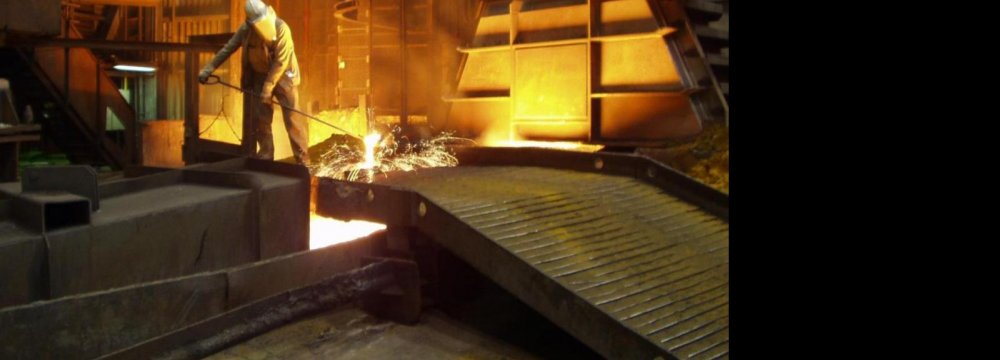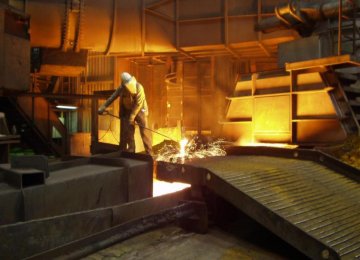Iran produced 225,000 tons of steel alloys in the first half of the current Iranian year registering 17 percent growth compared to the same period last year, according to a report from the Iranian Mines & Mining Industries Development & Renovation (IMIDRO).
Between March 21 and September 23, 192,000 tons of steel alloys were sold at the domestic markets. The figure showed 32 percent growth in weight and 34 percent increase in value compared to similar period last year.
Iran Alloy Steel Company provides raw material used in a variety of industries including automotive and industrial equipment manufacturing as well as oil, gas, petrochemical, rail and construction equipment.
Iran is the world's 15th largest steel producer. Last year, the country produced 15.6 million tons of raw steel indicating 8.8 percent growth compared to 2012 and 16.5 million tons of steel byproducts, showing 5 percent slump compared to the previous year.
Weekly Steel Supply Down
The steel market last week witnessed decline in supply due to low demand for steel bullion and the fact that producers have been operating at minimum capacity, Foolad News reported.
Steel billet prices remained unchanged; the imported 150-mm billet delivered at Anzali Port sold at 16,900 rials. The domestically produced 120-mm billets also sold at 16,200 to 16,300 rials plus 8 percent VAT.
Last week, Esfahan Steel Company sold 10,000 tons of steel bullion at the base price of 15,550 rials but shortly after the company sold another 30,000 tons at a 150-rial discount. It is reported that Khuzestan Steel Company will offer the same product at the Iran Mercantile Exchange at a base price of 15,300 rials next week.
The low supply of scrap metal in small plants is unlikely to result in a decline in billet prices. However, Khuzestan Steel Company and other plants that produce steel bullion out of direct reduced iron (DRI) can reduce prices given the fall in iron ore prices. At the moment, foreign exchange rates make it less economical to import steel bullion. However, global prices are falling and Black Sea FOB price may even reach $450 given the Chinese competition and falling iron ore prices.
Those plants producing billet out of scrap cannot manipulate the prices significantly. On the other hand, those that produce bullion out of DRI can, however, it may be not economically worthwhile. If the government allows for such a price reduction in IME, small plants' production will stop. This comes amid very low demand for steel bullion and minimum production of steel plants. The prices have continued to drop down to 200 rials/kg, demand for steel sections still remains low and the price of bullion remains almost unchanged. The current situation is not economical for steel roll producers and that is why supply has plunged. However, the prices are still low given the low demand.
Although the bullion has registered very low prices, no dramatic development is expected as the market is still waiting for the result of the next round of nuclear negotiations between Iran and the P5+1.
The price of 2-mm hot-rolled sheets last week remained unchanged in Anzali Port, which experienced fluctuation at a base price of 20,600 rials. Similar Korean products offered in Imam Khomeini Port registered a lower supply last week. Although hot-rolled sheets of 5.2 to 8 mm are facing limited supply as well as their import, no changes in prices were witnessed. Hot-rolled sheets of 8-15 mm registered 100 to 200 rials declines in price. Except for 12-mm hot-rolled sheets that face limited supply, the prices of other items declined due to imports from Russia.
Mobarakeh's cold steel sheets are still scarce in the market pushing the price of some items to a record high. Reports from the market suggest that 5.2-mm sheets have been sold at 32,000 rials/kg.
In light of limited supply by Mobarakeh Steel, many traders and consumers have turned to China and South Korea for import of cold sheets which need around 3 months to complete. Mobarakeh is concerned that cold sheets face the same fate as other sections in case of generous supply.
Despite minor fluctuations, the price of galvanized sheets remained unchanged due to low demand and supply.





